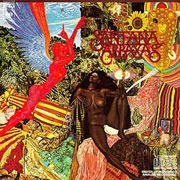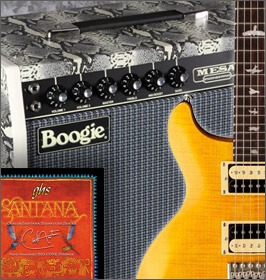With the first album, Santana by Santana, having launched the band into the public eye, Santana could easily have faded into obscurity by releasing a sub-par follow up. In fact, many bands do just that; so many so that the “sophomore slump” is a well-known phenomenon in the music business. Carlos Santana and the group, however, did just the opposite.![]()
Abraxas, released almost exactly one year after the debut album, not only lived up to the promise of that first record, but exceeded it. Abraxas is generally considered to be Santana’s finest album, and with good reason. While maintaining the raw, percussion-driven feel of the first album, Abraxas presents a more cohesive package, with songs dominating, rather than extended jams.![]()
Abraxas Song List

Obviously, Santana’s remake of Fleetwood Mac guitarist Peter Green’s “Black Magic Woman” — combined successfully with jazz guitarist Gabor Szabo’s “Gypsy Queen” — is one of the two best-known, and best-loved, tracks. The other is, of course, the revved up cover of “Oye Como Va“: percussion legend Tito Puente’s 1956 Latin anthem. Both of these remain fresh to this today.
But Abraxas, besides producing these two classic hits, has surprising depths. Carlos’ slow instrumental, “Samba Pa Ti” (Samba for You) has a deceptively simple series of riffs over a two-chord progression. It reveals the legendary guitarist’s gift for melody, and points toward a career of memorable guitar-driven hooks. The B section, in particular, where the band speeds up to a livelier groove, features Santana improvising a solo that appears as if each note was carefully crafted.![]()
Showing their jazz side, the band also rips through the Carlos Santana/Alberto Gianquinto composition, “Incident at Neshabur.” The song’s complex arrangement, complete with multiple time and key changes, is executed beautifully by the group. And Carlos’s dynamic solo in the end, swinging from soft trills to long, held, on-the-edge-of-feedback notes, is inspired.
Gregg Rolie keeps to the band’s blues roots with his songs “Hope You’re Feelin’ Better,” and “Mother’s Daughter.” Santana’s chunky wah-wah driven riffs, on the former, blend perfectly with Rolie’s Leslie-fueled organ swells. Even the percussionists contribute tunes, with conguero Mike Carabello offering the psychedelic “Singing Winds, Crying Beasts,” and Chepito Areas penning “Se a Cabo” and “El Nicoya.”
Abraxas, still as viable today as the year it was recorded, contains that rare magic of a unique band at the top of their game. While later albums sold more copies (Supernatural, in particular, with more than 25 million units), it would be extremely surprising if any of them achieved the legendary status (and radio staying power) of Abraxas.
Abraxas Album Cover
The name of the album, Abraxas, comes from a line in a Herman Hesse book. And the cover was painted by renowned artist Robert Venosa, who’s other work includes sculpting and film design (his sketches served as a conceptual framework for the movie Dune).



